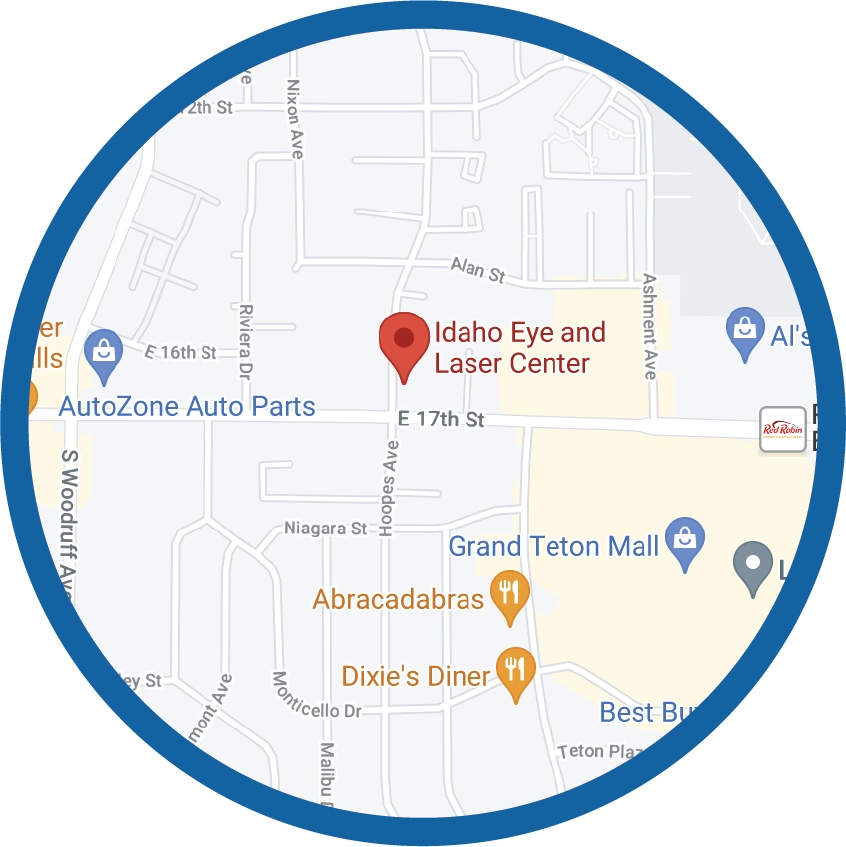Common Questions About PRK
1. Does PRK hurt?
Prior to the PRK procedure, your doctor applies numbing eye drops to block the feeling of pain. While every person has their own unique threshold for discomfort, most patients do not report that the process is painful. The PRK recovery process may bring you temporary discomfort as the epithelial cells regenerate on your eye. These discomforts can include pain, throbbing, a foreign substance feeling, etc. This can be managed with pain medications outlined by your doctor.
2. How long does PRK take?
The full PRK procedure takes 20-30 minutes, from the time you enter our surgical suite until you go into the recovery area. The excimer laser treatment where we reshape your cornea takes less than 30 seconds!
3. What are the risks of PRK?
Although considered a relatively safe medical procedure, PRK carries some element of risk. Complications of PRK can include:
- Starbursts, glare or halos in low light environments
- Sensitivity to bright light
- Overcorrection or undercorrection
- Infection
- Pain
- Double vision
- Clouded vision
4. How long will I need to be off work?
Because your eyes need time to recover an intact outer layer on the cornea, expect to take 5-7 days off from work to recover from PRK in Southeast Idaho. Your best vision results will probably take longer to achieve, but most patients are able to return to non-strenuous activities after 1-2 weeks. It is important to keep your follow-up visits so your doctor can monitor your progress.
5. Will I ever need glasses after PRK?
Your vision is constantly changing. While PRK is performed to correct a refractive error, other vision conditions can develop that may require you to need glasses in the future. Most people over age 40 develop a condition called presbyopia. This is a gradual stiffening of the eye lenses that makes it difficult to focus on things up close like reading material. Even if you had a successful PRK procedure, you may need over-the-counter reading glasses as you grow older. There are also different surgical methods to correct presbyopia. If you are experiencing this condition and are frustrated with reading glasses, contact us to learn about your treatment options.
6. What are the requirements for PRK?
There are several conditions that must be met to be considered for PRK:
- 18 years or older
- Stable vision prescription for at least one year
- Free of eye disease or other interfering vision conditions
- Proper corneal thickness
- Good overall health
- Realistic expectations
- Full understanding of the potential risks
The only way to know if you meet these requirements is by having a comprehensive PRK Consultation with us. It’s free and will let you know for sure if this is a safe option for vision correction for you.
7. Will the cost of PRK go down?
It is not likely that the cost of PRK will go down in the future. In fact, as technology changes the costs may actually rise over time. While the price of PRK is a definite concern for many people, you don’t want to shop for the lowest price if it means sacrificing quality. When you are researching PRK centers, be sure to weigh the cost against:
- The surgeon’s training, experience, and results
- The type of technology being used
- Whether or not a low advertised price will apply to your vision prescription
- Additional hidden fees that will apply
- Inclusion or exclusion of enhancement surgeries and follow-up care
You only have one set of eyes, so make sure you put your vision care into a doctor and center you trust – a center like the Idaho Eye and Laser Center.
8. Can I have PRK on both eyes at the same time?
Yes. You can choose to have the surgery on both eyes or just one eye at a time.
9. When can I wear makeup after PRK?
Patients should wait at least 2 weeks before wearing makeup. We recommend that patients purchase new eye makeup to avoid infection.
If you have more questions about PRK, contact us to schedule a free LASIK Screening.




